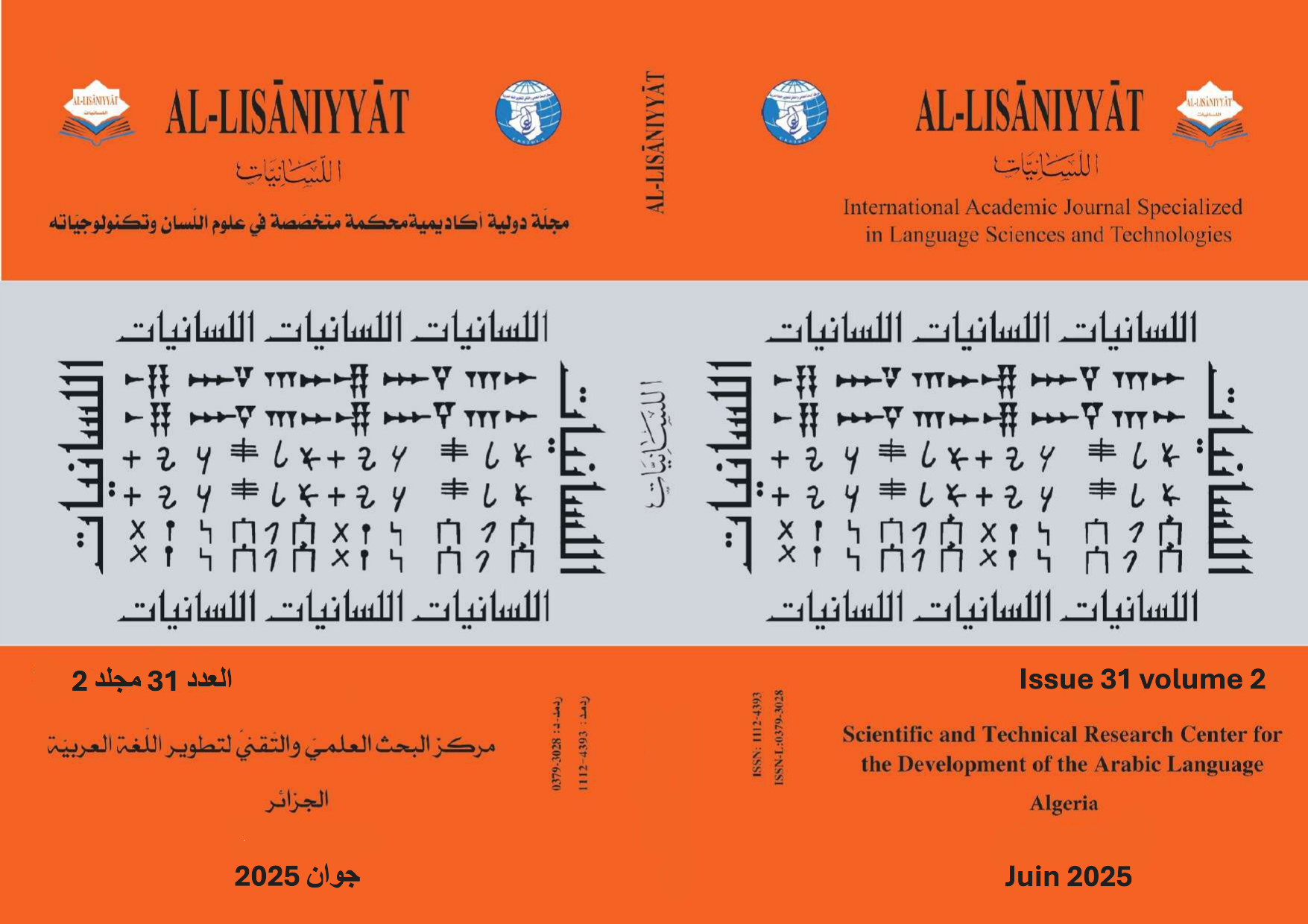Vowel Shortening in Wahrāni Spoken Arabic
Main Article Content
Abstract
The study investigates the phonological process of vowel shortening in Wahrāni Spoken Arabic (WSA): an Algerian Arabic dialect spoken in the north-western region of Algeria. The researcher uses recordings and field notes of spontaneous speech of fifty normal (non-impaired) native male and female Wahrāni adult speakers in a natural context as data for the study.
The study shows that vowel shortening (VS) in WSA occurs in both closed and open syllables. In the case of closed syllables, vowels
shorten to avoid trimoraic syllables. In open syllable, long vowels shorten due to deletion of coda consonants rendering CVVC syllables open. CVV syllables are not allowed in WSA and so the vowel is shortened leading to mora loss.
Article Details

This work is licensed under a Creative Commons Attribution-NonCommercial 4.0 International License.
References
Abu-Salim, I. (1986), Vowel shortening in Palestinian Arabic: A metrical perspective. Lingua, 68(2-3), 223-240.
Benyagoub, L. (2017). A Moraically-Based Model of the Syllable in Bechar Arabic. Arabic Language, Literature & Culture, 2(2), 40-48.
Bernouss, M. (2007). A moraic approach to syllables: evidence of Moroccon Arabic. Iranian Journal of Language Studies (IJLS), 1(3),155-170
Bouhadiba, F. (1988). Aspects of Algerian Arabic Verb Phonology and Morphology. Unpublished Doctoral Dissertation, University of Reading.
Brame, M. (1970). Arabic Phonology: Implications for Phonological Theory and Historical Semitic. Unpublished Doctoral Dissertation, Massachusetts Institute of Technology.
Broselow, E. (1976). The phonology of Egyptian Arabic. Unpublished Doctoral Dissertation. Amherst, MA: University of Massachusetts.
Broselow, E. (1992). Parametric variation in Arabic dialect phonology. In E. Broselow, M. Eid,& J. McCarthy (eds.),Perspectives on Arabic Linguistics IV.Papers from the Fourth Annual Symposium on Arabic Linguistics, (pp.7-45). Amsterdam: John Benjamins.
Chomsky, N and Halle, M. (1968). The Sound Pattern of English. New York: Harper and Row.
Eid& J. McCarthy (eds.), Perspective on Arabic Linguistics II: Papers from the SecondSymposium, (pp. 1-54). Amsterdam: John Benjamnins.
Hayes, B. (1989). Compensatory Lengthening in moraic phonology. Linguistic Inquiry, 20, 253-306.
Hayward, K. (2000). Experimental Phonetics. Harlow, England: Longman.
Hyman, L. (1985). A theory of Phonological Weight. Dordrecht: Foris.
Kambuziya, A.K.Z. (2007). Vajshenasi: Rouykardha-ye Gha’ede-bonyad [Phonology: Rule-based approaches]. Tehran: Samt.
Kenstowicz, M. (1994).Phonology in Generative Grammar. Blackwell publishers: Cambridge, Massachusetts.
LaFond, B. (2024). Indo Latin vowel weakening in phonetic perspective. European Linguistics, 1-21. doi:10.1163/22125892-bja10032.
McCarthy, J., & Prince, A. (1986). Prosodic morphology. MA: University of Massachusetts, Amherst and Brandeis University. Rutgers Center for Cognitive Science (RuCCs) technical report, 32
McCarthy, J., & Prince, A. (1990, January). Prosodic morphology and templatic morphology. In Perspectives on Arabic linguistics II: papers from the second annual symposium on Arabic linguistics (pp. 1-54).
Myers, S. (1987). Vowel shortening in English. Natural Language and Linguistic Theory, 5(4), 485–518.
Nash, C. M. (2005). A phonetic and phonological approach to stress in Sinhala verbs, Santa Barbara Papers in Linguistics.
Sadeghi, A.A. (2001). Tahavol-e pasvand-e haselmasdarazpahlavi be farsi [The evolution of abstract suffix from Pahlavi to Persian]. Masa’el-e Tarikhi-e Zaban-e Farsi [Historical issues of Persian]. Tehran.
Sarmış, E. E., & Canalis, S. (2021). High vowel shortening in Turkish. In Proceedings of the Workshop on Turkic and Languages in Contact with Turkic (Vol. 6, pp. 5060-5060). https://doi.org/10.3765/ptu.v6i1.5060
Sheredi, N. (2015). Prosodic Processes in Two Dialects of Libyan Arabic: A Harmonic Serialism Approach (Doctoral dissertation, University of Essex).
Watson, J. C. (2002). The phonology and morphology of Arabic. Oxford University Press, USA.
